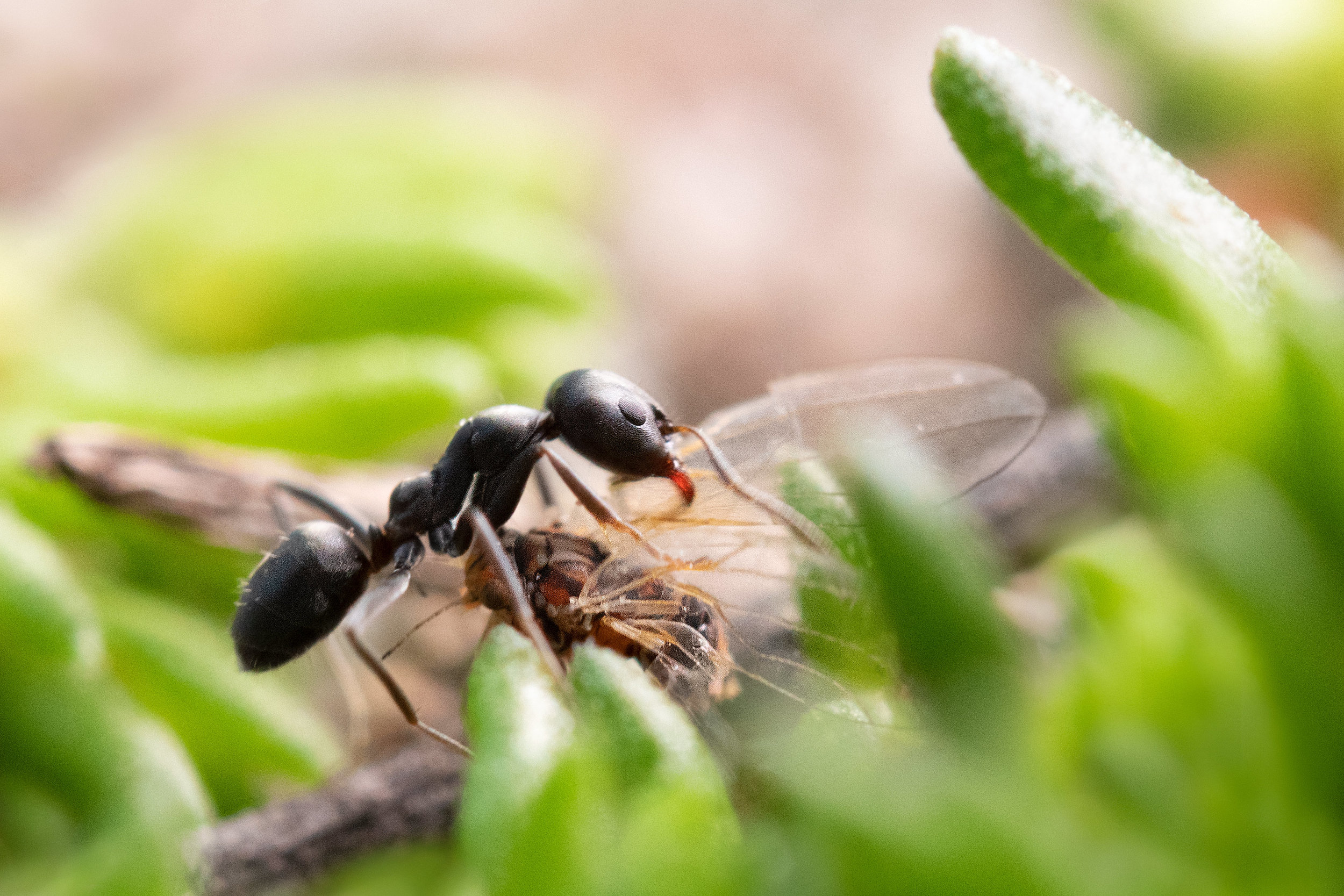fREQUENT ANT QUESTIONS
Here we hope to answer some of your curious questions regarding the fascinating world of ants!
+ How Do You Find Queen Ants?
We find our queens during a period known as 'nuptial flights'. This is where the reproductive ants, (known as alates) fly off from their colonies in order to breed with foreign alates. After copulation occurs, we then collect some of the female alates, which at this point, are now capable of laying fertile eggs and forming new ant colonies.
The times in which these nuptial flights occur is dependent upon the species of ant, its region, and the local weather conditions. We find times of high humidity (often the few days/nights proceeding a heavy rainstorm) to be an ideal time to search.
+ Can’t You just Dig Up an Ant Colony?
Many ants are important for seed dispersal, cycling and enriching soil, decomposition, and more. Therefore, digging up, and removing established colonies from the wild like this, especially the rarer species, can negatively impact the surrounding environment. For this reason, we don’t condone collecting colonies in this manner.
Catching queens during nuptial flights is a far more sustainable practice, and we believe, catching these young newly fertilized queens, makes for a far more rewarding experience too. You see the colony slowly progress from just a single queen, tending to her first batch of eggs, and then, eventually, you see the first generation of workers arrive, and years later, a thriving colony, thousands of ants strong!
Plus, when digging up a mature colony, the queen is possibly already several years old, so she, and therefore the colony, likely won’t last nearly as long as a young queen (found during nuptial flights) would. And of course, it's a huge shock to ants’ system, being taken from their homes, where they’ve been happily living and thriving in for so long. To then be placed within an unfamiliar captive environment, the stress from the move may be too much for them to handle, and possibly result in illness or death.
+ how do i identify an ant?
When trying to determine the taxonomic identity of an ant, it's best to talk to fellow ant enthusiasts. Try joining local ant keeping groups on Facebook, Reddit, and other online forums, or simply ask us and we'll do our best to help!
When seeking help, it's important to be extensive as possible, providing...
+ What equipment is required for ant keeping?
To get yourself started, you will need...
+ Ytong or acrylic nest? How do I decide?
Both our acrylic and ytong nests are perfectly suitable for most ant species, so it mostly boils down to personal preference. However, some species may be better off in one over the other...
Ytong - The advantage of the ytong media is that it is extremely water retentive, so you won't have to hydrate the nest as often as the acrylic designs. It also offers a slightly larger chamber depth (10mm) than the acrylic nests (9mm). Making them more suitable for larger ants (such as Camponotus spp. and Myrmecia spp).
Acrylic - The advantage of acrylic is that it is assembled extremely securely. Making it a great choice for tiny ant species which may be able to squeeze through the lids of our porous Ytong designs (such as Monomorium spp. and Meranoplus spp.). Plus, the robust nature of acrylic allows it to be reused many times over. Simply move your colony out, disassemble the nest, give it a good clean under some hot water, reassemble, and it’s ready to house ants once again!
+ What Do I Feed An Ant Colony?
Ants require a varied diet of both sugar and protein rich foods. Some examples of suitable foods…
Sugar
Protein
It’s also important that the ants have access to clean drinking water. Simply place a test tube setup (a water reservoir blocked off with cotton wool) into their foraging area.
Different species of ants tend to have different dietary preferences. For example, Myrmecia and Amblyopone tend to avoid seeds and nuts as a source of protein, and instead favor insects and other arthropods. So, if you’re unsure of what your ants will like, do a little experimenting, offer them a vast variety of foods at once and see which they prefer.

